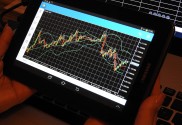
Profits are soaring! My ultimate guide to describing business graphs and charts in English. Part 1: Vocabulary
When describing graphs and charts in English, there are many different verbs you can use to talk about trends. Here is my ultimate guide to the vocabulary we use for this, which is excellent for presentations on financial performance or financial projections. If you type any of these phrases into Google and click on ‘news’,…

‘Sales increase’ or ‘sales are increasing’? My ultimate guide to describing business graphs and charts in English. Part 2: Tenses
Welcome to part 2 of my ultimate guide to describing charts and graphs! If you missed part one where I talked about vocabulary click here. Part two is all about the tenses you need to use when talking about changes and trends. Describing charts in the present time: This area is probably the biggest mistake…

My Ultimate Guide to Describing Business English Graphs and Charts. Part 3: Putting it all together
Welcome to the 3rd part of my ultimate guide to describing charts and graphs. If you missed parts one and two, check out my guides to vocabulary for graphs and verb tenses for graphs. After learning about vocabulary and verb tenses for describing charts and graphs, there are just a few things we need to…

One group of business verbs that English learners always get wrong in emails. Here’s how to get them right!
One of the most common mistakes that I see on the end of business emails is the phrase: I look forward to hear from you This may look correct to an English learner, but it looks very strange to a native English speaker. The correct version should be: I look forward to hearing from you …
Recent Comments